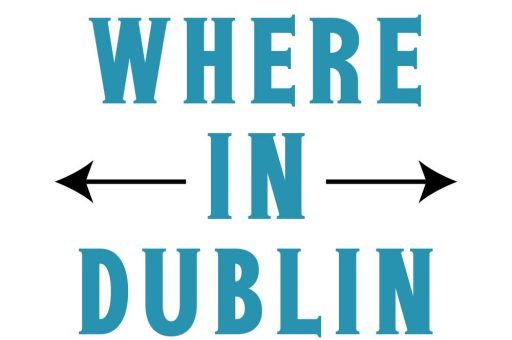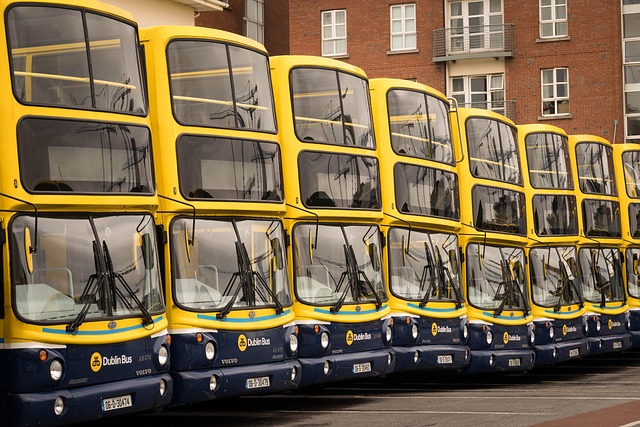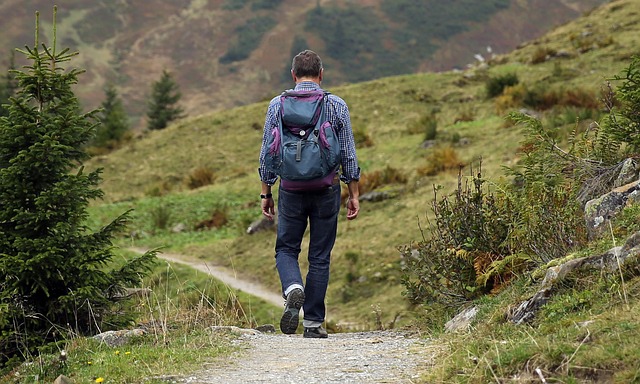
Cycling in Dublin has grown in popularity over the past few years. With an expanding network of bike lanes, scenic trails, and urban routes, navigating the city on two wheels has never been more exciting. Whether commuting to work, exploring historical sites, or enjoying a leisurely weekend ride, Dublin offers a variety of cycling options for every type of rider. In this guide, we’ll cover the best cycling routes, tips for safe riding, and how to use Dublin’s route maps to make the most of your cycling experience. From my own personal experience, having explored the city extensively on a bike, these insights will help riders of all levels plan their journey effectively.
Why Cycling in Dublin is Worth It
Dublin is not just the capital city of Ireland, it’s a hub of culture, history, and vibrant neighborhoods. Cycling here allows riders to:
Explore historical landmarks like Dublin Castle, Trinity College, and Kilmainham Gaol.
Discover scenic paths along the River Liffey and coastal trails at Howth and Sandymount.
Avoid city traffic while reducing carbon footprint and staying active.
Enjoy Dublin’s parks and green spaces, from Phoenix Park to St. Stephen’s Green.
Cycling also provides a flexible way to explore hidden gems that might be missed when using public transport or driving. The city’s recent investment in cycling infrastructure has made routes safer, more accessible, and more enjoyable for both locals and visitors.

Let’s Understand Dublin’s Cycling Infrastructure
Before jumping into specific routes, it’s important to understand the layout of Dublin’s cycling infrastructure:
Dedicated Cycle Lanes: These are marked lanes separated from traffic, providing safer passage for cyclists. Major roads like South Great George’s Street and Merrion Road have dedicated lanes.
Shared Bus and Cycle Lanes: Some routes combine bus lanes with cycling paths. Riders should be cautious, especially during peak hours.
Greenways: Dublin’s greenways are off-road trails perfect for leisurely rides or family cycling. Examples include the Royal Canal Greenway and the Grand Canal Greenway.
Bike-Share Stations: Dublinbikes, the city’s bike-sharing system, has over 100 docking stations. Using a bike-share bike is a convenient way to explore the city without owning a bike.
Signage and Maps: Official cycling maps and signs guide riders through safe routes, key landmarks, and scenic trails.
How to Read Dublin Cycling Route Maps
Using cycling maps effectively ensures a smooth and enjoyable ride. Here are some tips:
Identify your starting point and destination: Dublin cycling maps mark major routes, cycle lanes, and points of interest. Start by selecting where you want to go and plan your route accordingly.
Check the route type: Maps often distinguish between on-road lanes, off-road greenways, and mixed traffic areas. Choose routes that match your comfort and skill level.
Look for amenities: Maps highlight bike parking, repair stations, water fountains, and public toilets, which is especially helpful for long rides.
Consider terrain: Dublin’s terrain varies from flat city streets to gentle hills in areas like Howth and Drumcondra. Maps indicate elevation changes, allowing you to prepare for uphill segments.
Use digital tools: Many Dublin cycling maps are available online or as apps, offering turn-by-turn directions and live traffic updates.
Top Dublin Cycling Routes
Here’s a breakdown of some of the best cycling routes in Dublin, perfect for both beginners and experienced riders:
1. Phoenix Park Loop
Phoenix Park is one of Europe’s largest urban parks, spanning over 1,700 acres. Cycling around the park provides a mix of open fields, wooded areas, and historical monuments.
Distance: Approximately 7 kilometers (per loop)
Difficulty: Easy
Highlights: Dublin Zoo, Áras an Uachtaráin (President’s residence), Victorian gardens, open fields
Tips: Early mornings are quieter. Watch for pedestrians and deer within the park.
This route is ideal for casual cyclists or families. The wide paths and scenic surroundings make it perfect for a relaxing ride.
2. Grand Canal Greenway
The Grand Canal Greenway stretches from the Grand Canal Dock in Dublin city center to the suburbs, offering a peaceful ride along the water.
Distance: 20 kilometers one-way
Difficulty: Easy to moderate
Highlights: Waterside scenery, historic locks, cafes along the canal
Tips: Stop at Portobello or Ringsend for coffee. The canal path is mostly flat, making it ideal for beginner riders.
From my own personal experience, this route is one of the most tranquil rides in Dublin, especially during weekday mornings when it’s less crowded.
3. Royal Canal Greenway
Running parallel to the Grand Canal but heading north, the Royal Canal Greenway takes riders from Dublin to the outskirts of the county.
Distance: Up to 130 kilometers (full length)
Difficulty: Moderate
Highlights: Canalside villages, wildlife, rural scenery
Tips: Plan stops in towns like Maynooth or Mullingar. Bring water and snacks for longer stretches.
This route is ideal for longer day trips or weekend cycling adventures.
4. Dublin Bay Coastal Route
For those who enjoy sea views, the Dublin Bay Coastal Route is unbeatable. It runs from Dublin city to Howth, passing through Sandymount and Clontarf.
Distance: 15 kilometers one-way
Difficulty: Moderate
Highlights: Coastal views, Howth Harbour, Clontarf promenade
Tips: Keep an eye on wind conditions near the coast. Early evening rides offer stunning sunsets.
From my own personal experience, the coastal route is both refreshing and energizing. Riding along the water makes even the uphill climbs feel manageable.
5. Clontarf to Sutton Loop
This scenic loop along Dublin’s north coast combines urban and coastal cycling.
Distance: 18 kilometers
Difficulty: Moderate
Highlights: Dollymount Strand, Bull Island, Sutton Creek
Tips: Stop for a snack at Sutton Village. Bull Island is perfect for a short walking break.
The loop provides a mix of sightseeing and physical activity, making it a great choice for mid-length rides.
6. Dublin City Center Circuit
For urban cyclists, the city center offers a compact route filled with landmarks and cycling infrastructure.
Distance: 10 kilometers
Difficulty: Easy to moderate
Highlights: Trinity College, Temple Bar, Ha’penny Bridge, Dublin Castle
Tips: Peak hours are busy, so plan early mornings or evenings. Watch for tram tracks, which can be tricky for bike tires.
This route is excellent for tourists who want to combine sightseeing with cycling.
7. Howth Head Trail
For more adventurous riders, Howth Head offers challenging terrain with rewarding views.
Distance: 15 kilometers
Difficulty: Moderate to difficult
Highlights: Cliffside paths, Howth village, panoramic views of Dublin Bay
Tips: Wear sturdy shoes and a helmet. Some sections require walking the bike over rough terrain.
This trail is perfect for cyclists who enjoy combining physical challenge with breathtaking scenery.
Safety Tips for Dublin Cyclists
While Dublin is increasingly bike-friendly, it’s essential to prioritize safety:
Wear a helmet: Always protect your head, especially on busier or hilly routes.
Use lights and reflective gear: Visibility is key, especially during winter months or early mornings.
Follow traffic rules: Obey signals, stop at red lights, and yield to pedestrians.
Stay alert: Watch for tram tracks, parked cars, and opening doors.
Plan for weather: Dublin weather is unpredictable. Bring rain gear and check the forecast before heading out.
Tools and Resources for Dublin Cycling Maps
Several tools and resources help cyclists plan their routes:
Dublin City Council Cycling Maps: Official PDF maps detailing bike lanes, greenways, and safety tips.
Dublinbikes App: Shows docking stations, bike availability, and nearby cycle lanes.
Google Maps Cycling Layer: Offers navigation with elevation, traffic, and dedicated cycling paths.
Strava and Komoot: Ideal for tracking distance, elevation, and sharing routes with the cycling community.
Using these resources ensures that riders have access to up-to-date information, making cycling safer and more enjoyable.
Planning Your Cycling Trip in Dublin
When planning a cycling trip, consider the following:
Choose your route: Decide based on distance, difficulty, and points of interest.
Check the bike: Ensure tires, brakes, and gears are in good condition.
Pack essentials: Water, snacks, phone, repair kit, and map.
Time your ride: Avoid peak traffic hours for a smoother experience.
Know your limits: Start with easier routes and gradually explore longer or more challenging rides.
From my own personal experience, proper planning significantly enhances the cycling experience and reduces stress.
Why Dublin is a Cyclist-Friendly City
Dublin is increasingly embracing cycling as a viable mode of transport. The city has invested in:
- Expanding bike lanes and greenways
- Improving signage and maps
- Supporting bike-sharing programs
- Promoting cycling safety initiatives
Cycling in Dublin not only offers convenience and fitness benefits but also encourages eco-friendly travel. It’s a city where the bike is no longer just a hobby, it’s a practical, enjoyable way to get around.
Conclusion
Cycling in Dublin is more than a mode of transport; it’s a way to explore the city’s culture, history, and natural beauty. Whether sticking to urban circuits, exploring greenways, or tackling challenging coastal routes, Dublin has something for every cyclist. Using cycling route maps ensures safe and efficient navigation, helping riders plan routes tailored to their interests and skill levels.
From my own personal experience, having spent countless hours exploring Dublin by bike, each route offers a unique adventure. The combination of city streets, parks, and scenic trails creates an unforgettable cycling experience. With the right preparation, a sense of adventure, and a good map in hand, Dublin becomes a city ready to be explored on two wheels.







